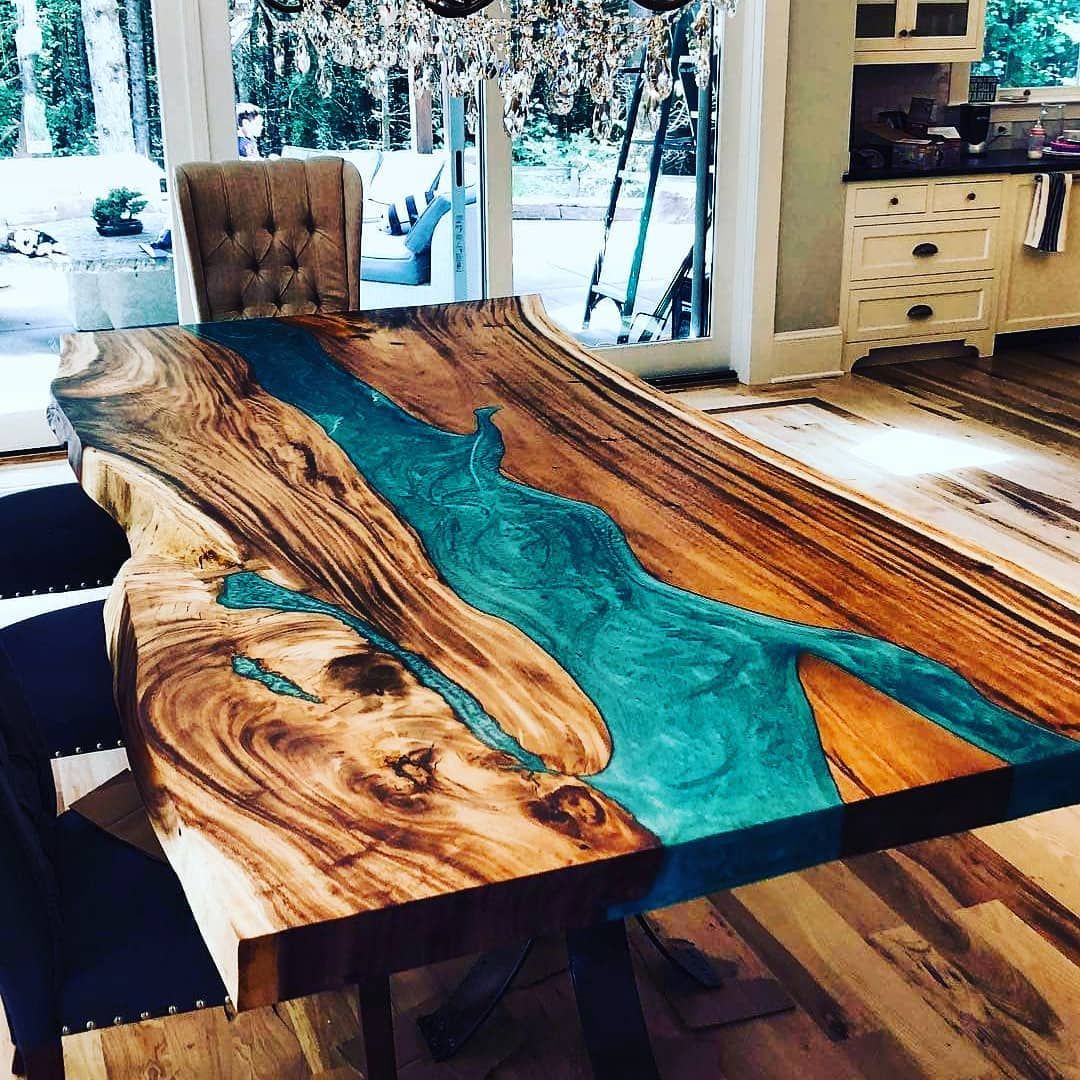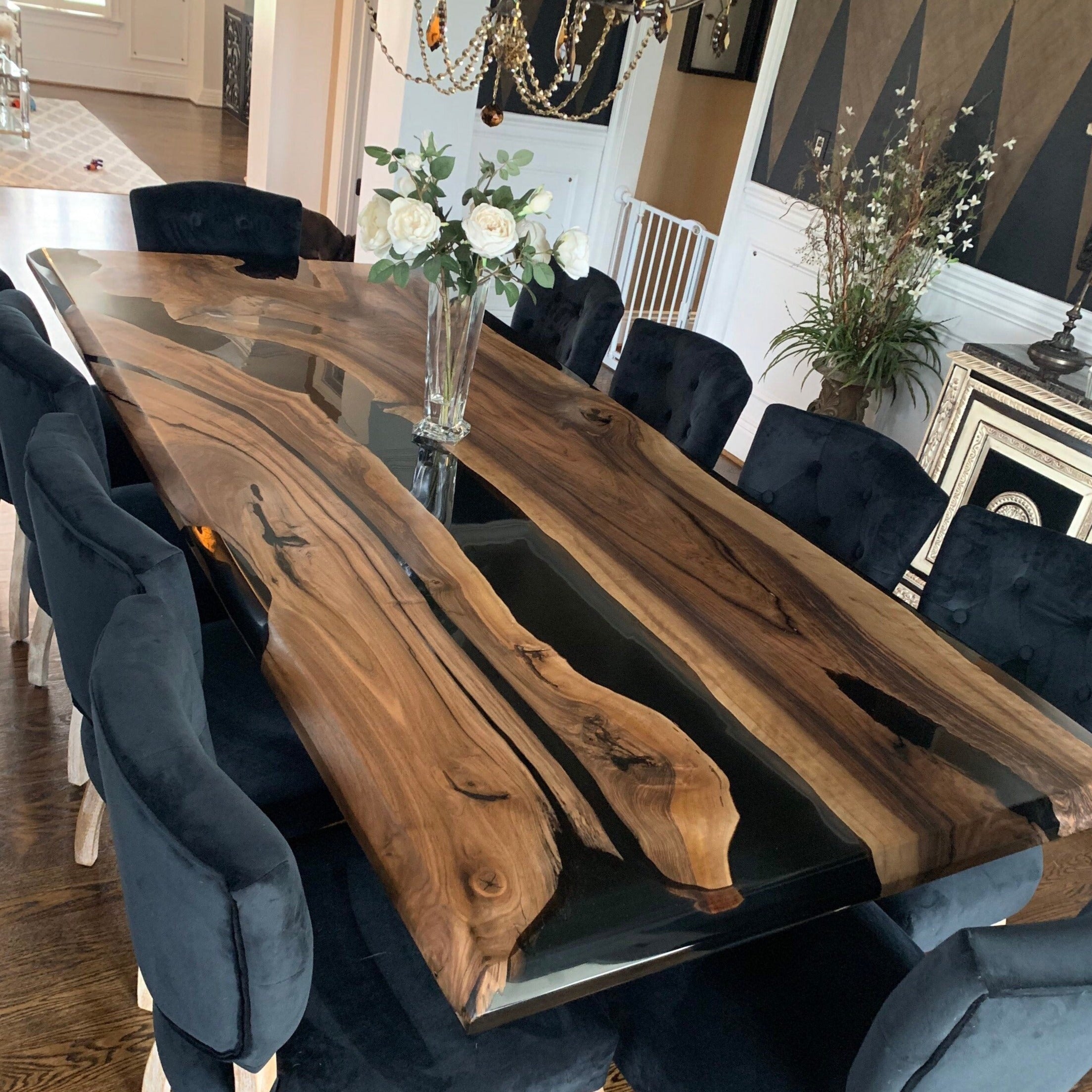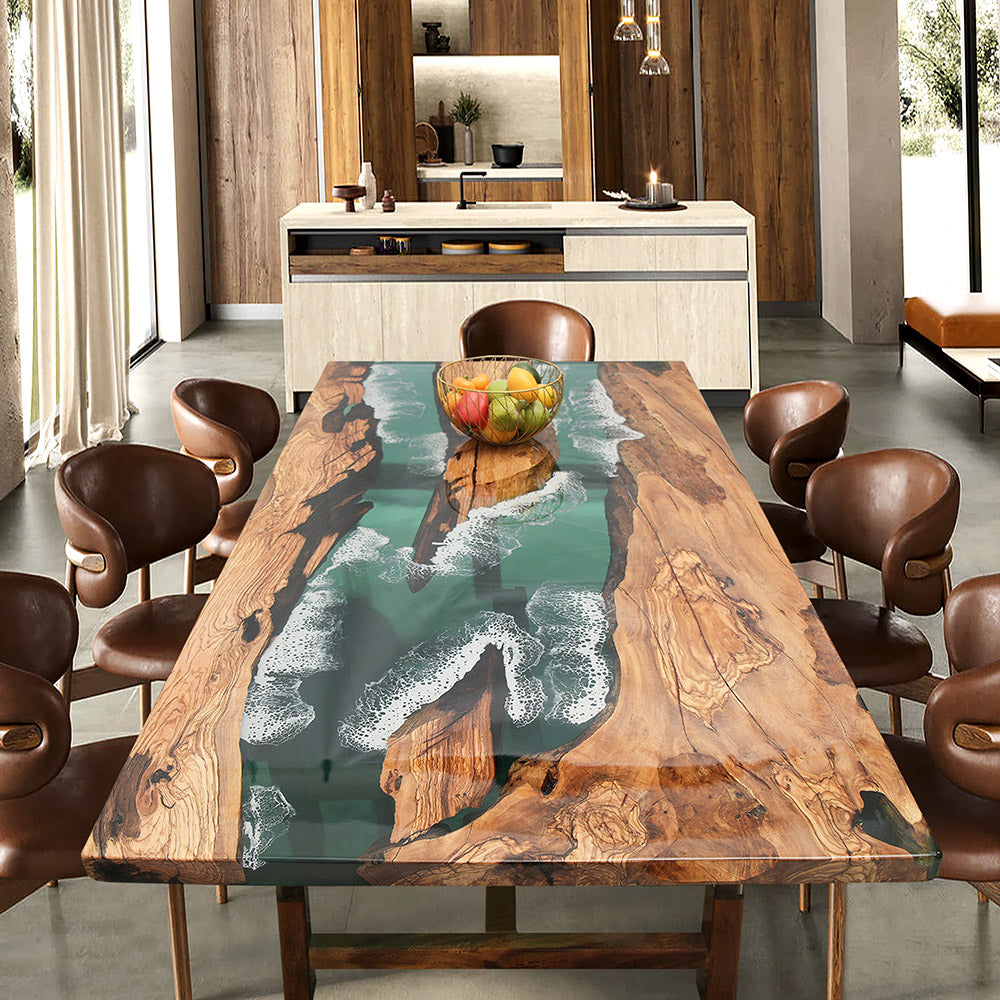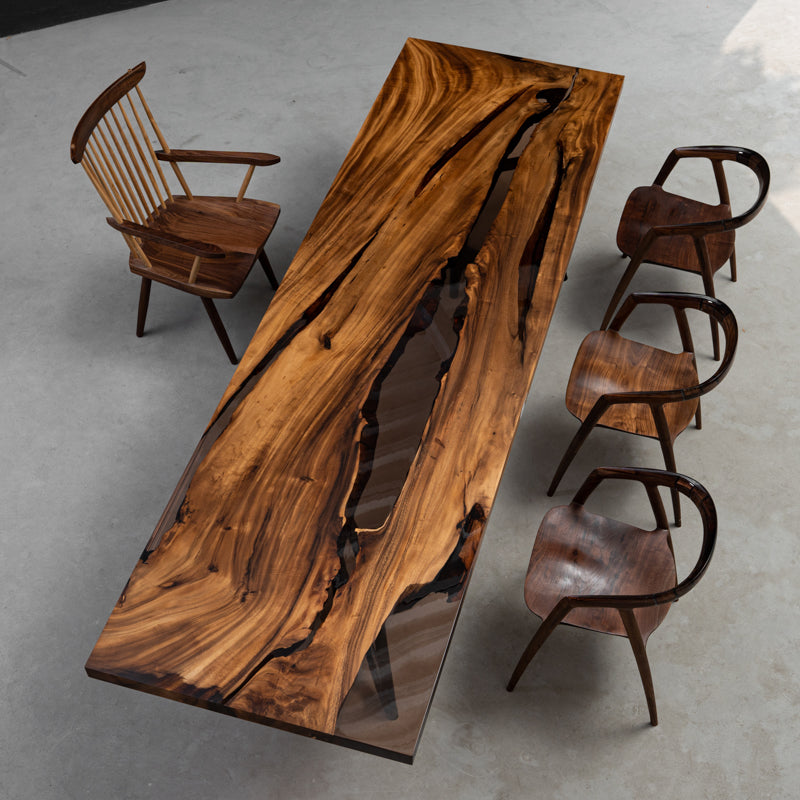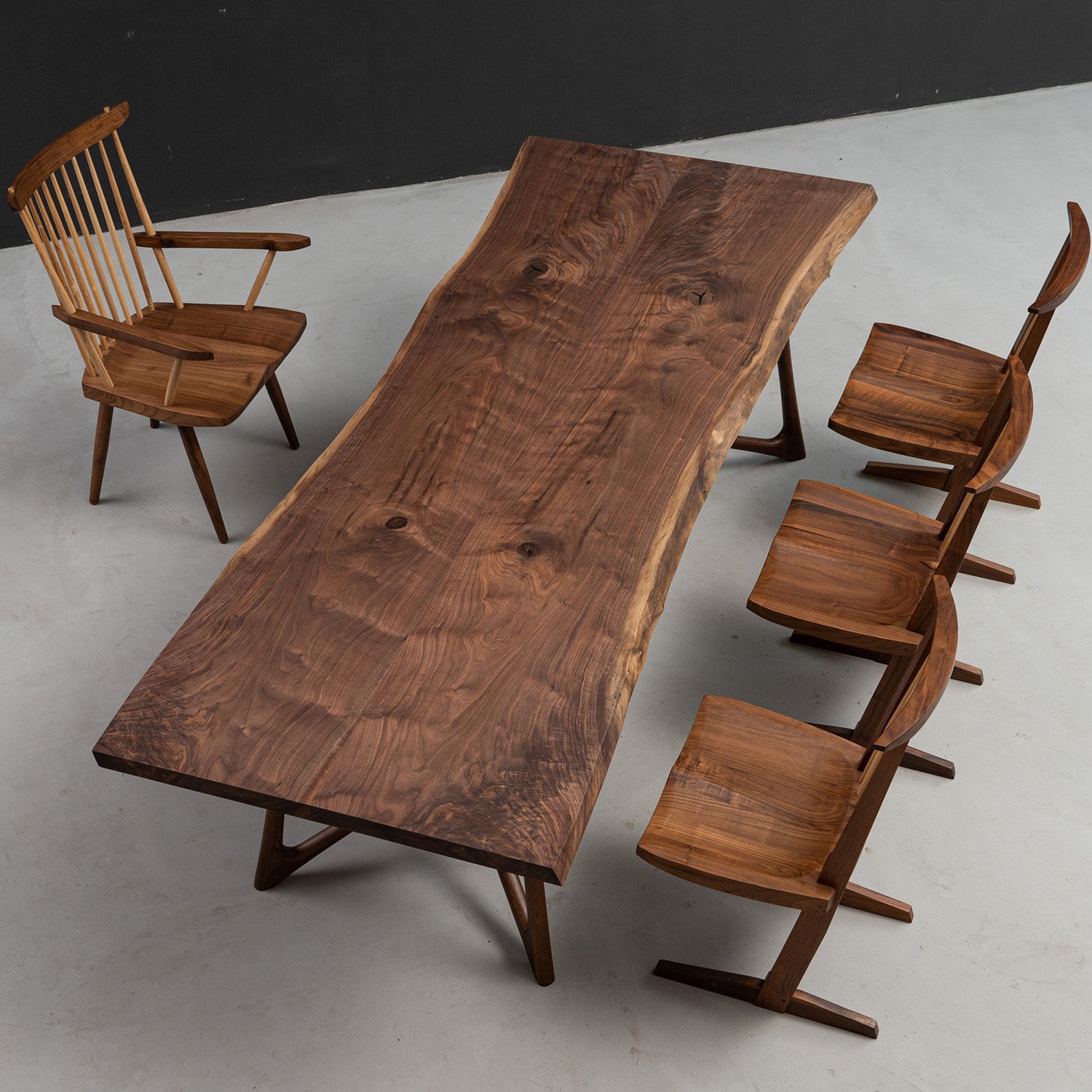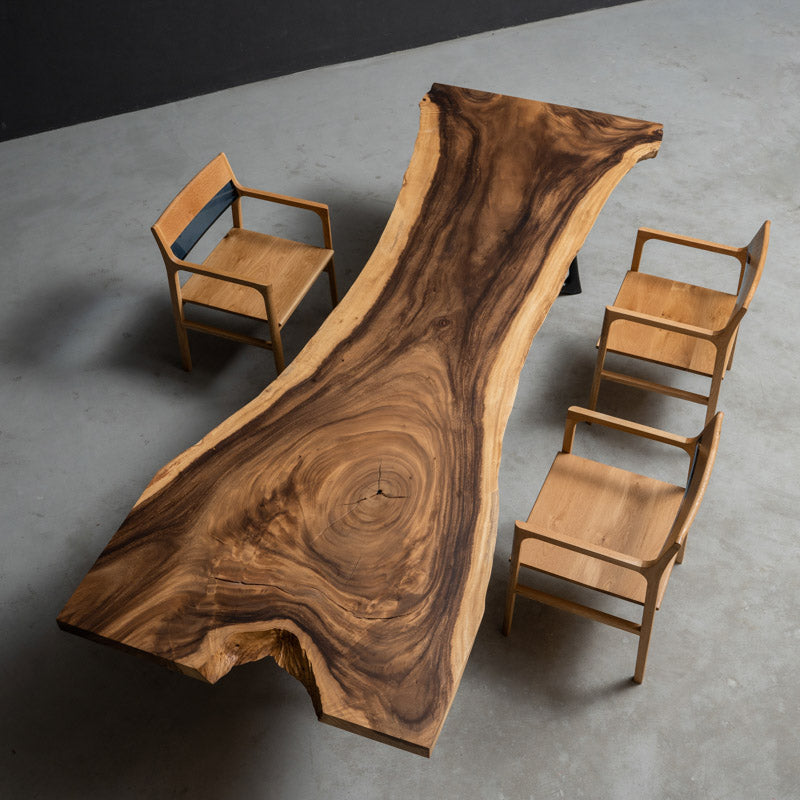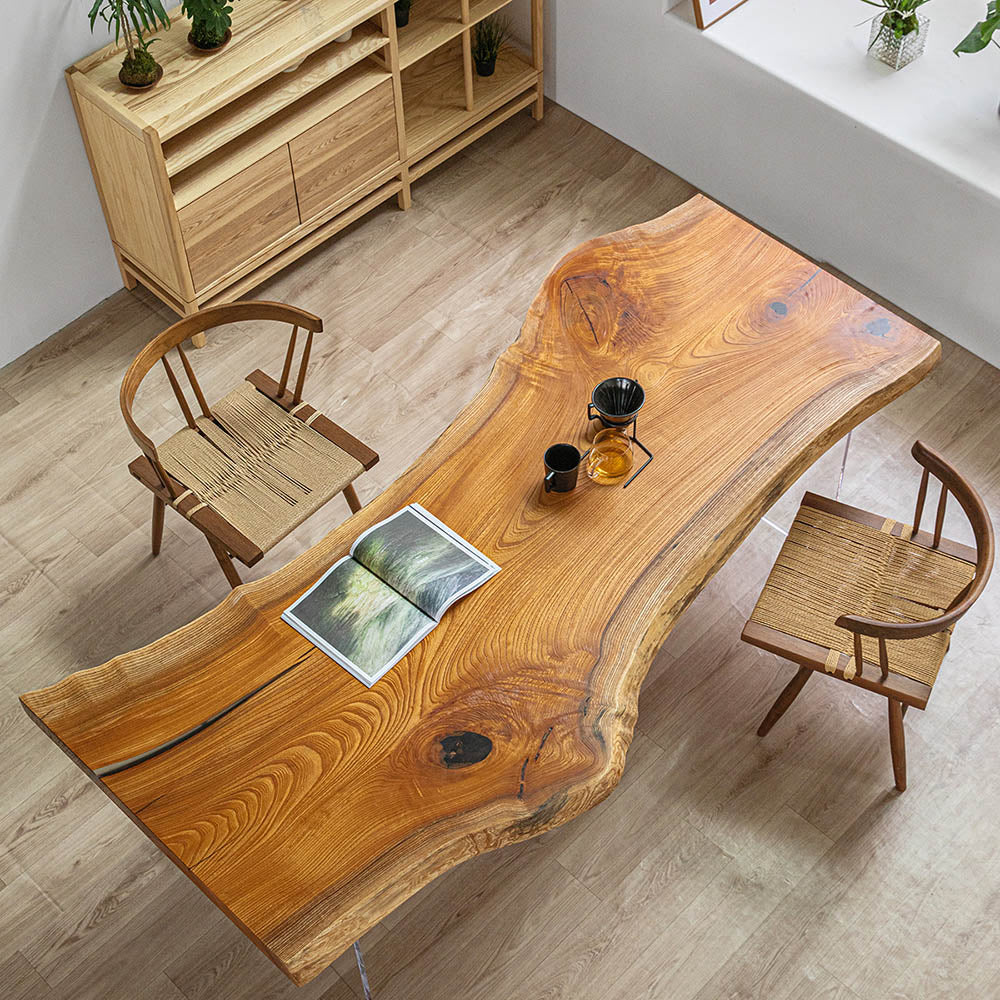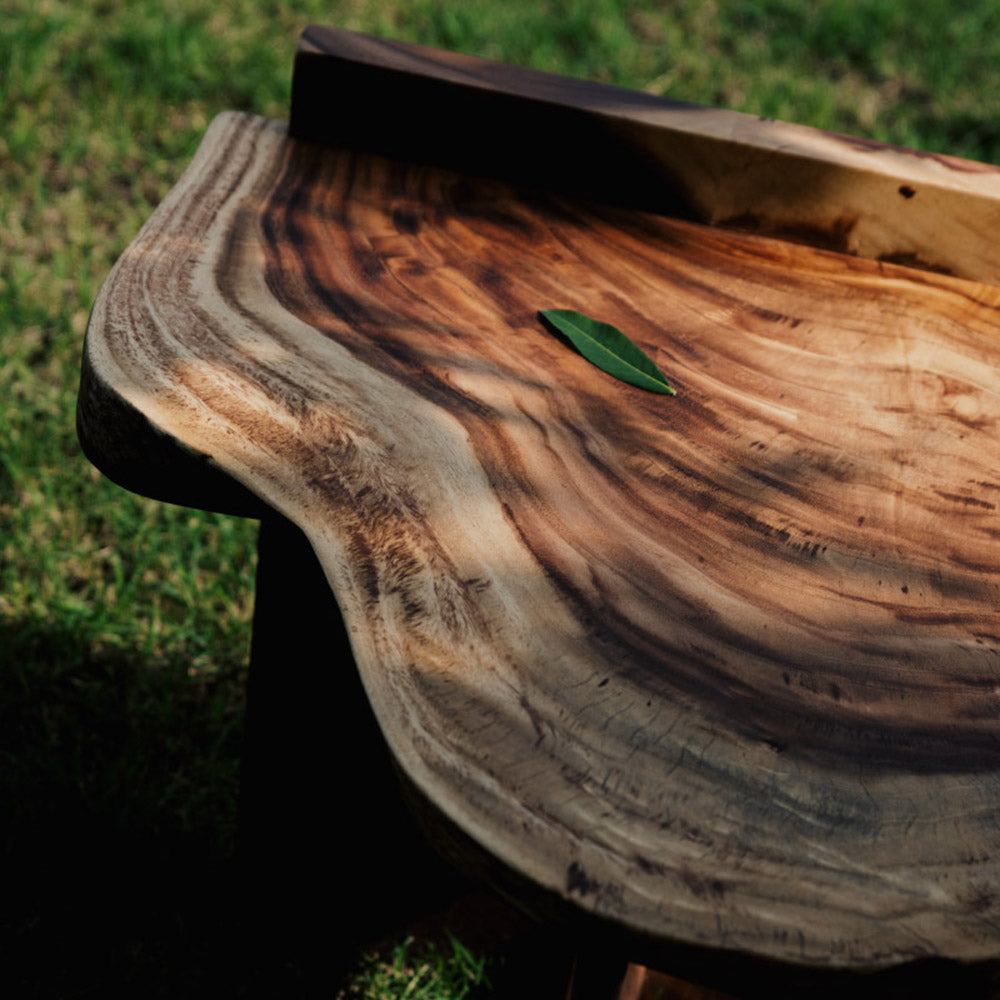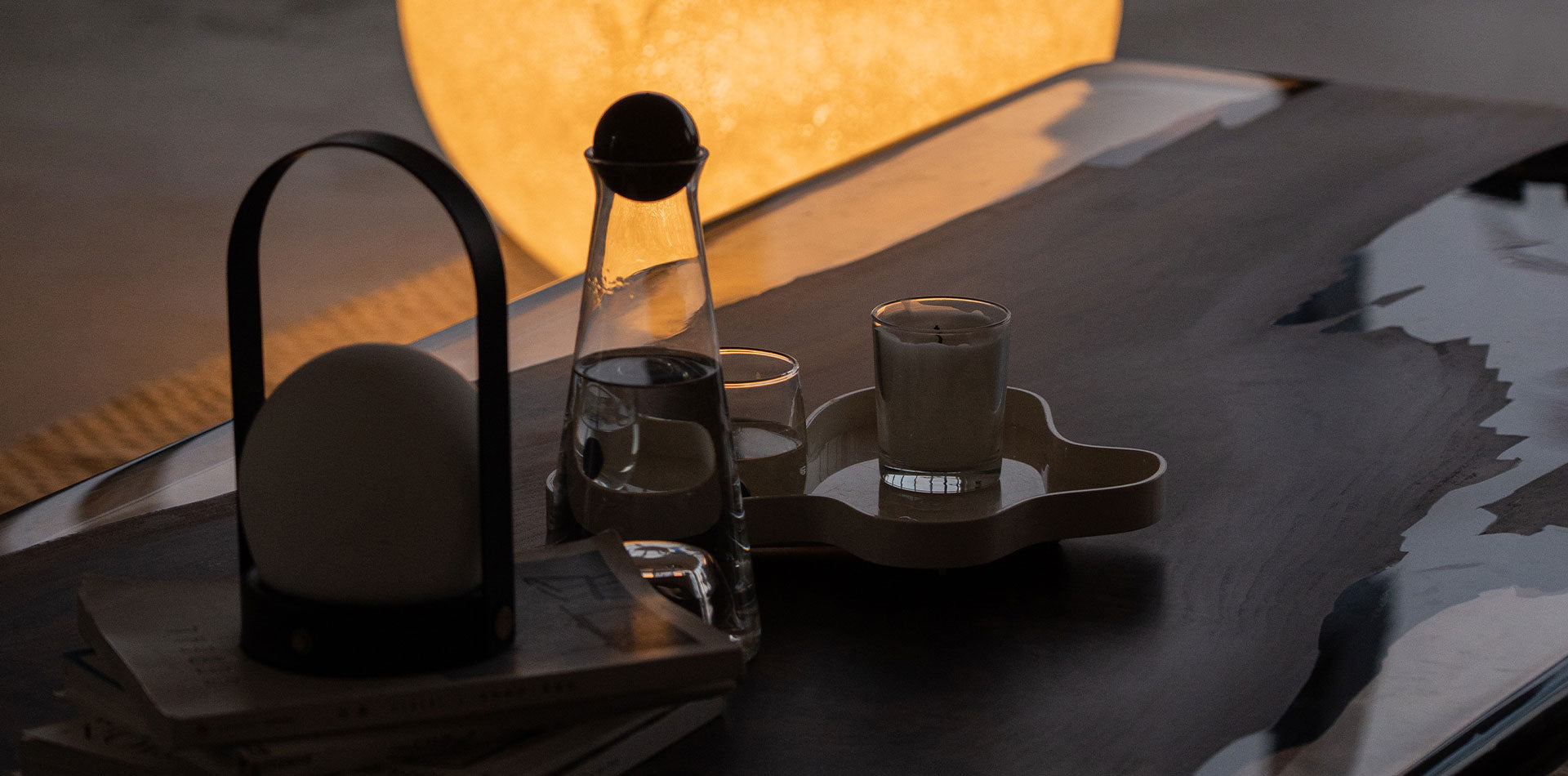
Master the Science of Wood Care and Provide the Best Protection to Wood with Appropriate Maintenance Methods.
Wood emerges from the earth, drawing nourishment from the natural spirit as it reaches upwards. Elements shift, ushering it into new growth environments, and day by day, it takes root in our daily lives. Through our daily usage, it forms another layer of significance, akin to life and warmth. This interdependent relationship requires diligent care.
Daily Care for Large Solid Wood Tables
Caring for your large solid wood table day by day
Solid wood tables are more durable than regular furniture, as wood naturally maintains a humidity level between 35°C to 65°C, which is also the ideal humidity for human habitation. When transitioning from autumn to winter, the air gradually becomes drier, affecting the moisture balance inside the wood. To ensure longevity in the years to come, it's essential to provide the wood with proper care using scientifically sound methods.
Prevent Prolonged Sun Exposure
Prolonged exposure to direct sunlight can cause wood to oxidize and change color, and extreme temperature variations may lead to cracking or warping.
Avoid Damp Environments
Avoid placing solid wood tables in damp environments to prevent surface mold due to high humidity.
Keep Away from High Heat Sources
Stay clear of high-temperature sources such as heaters, radiators, air conditioners, and grills to prevent excessive heat-induced cracking or warping.
Regularly Clean the Tabletop
Promptly clean and wipe away any accumulated water, dust, and dirt from the tabletop to keep it clean and tidy for prolonged use.
Dry Cleaning for Regular Table Maintenance
Routine cleaning primarily involves dry wiping. For stubborn stains, use a damp cloth to wipe the tabletop. This helps prevent cracking and warping of the solid wood.
Periodic Application of Wood Wax Oil
During use, solid wood tables may experience changes in moisture content due to climate conditions. In such cases, a clean, soft cloth dipped in wood wax oil can be used for simple maintenance. If there are no climate-related issues, it is recommended to apply wood wax oil every three months, especially at the two ends of the tabletop to prevent cracking and warping, ensuring long-lasting durability.
When applying the wood wax oil, gently apply it along the wood grain on the tabletop surface. This not only ensures an appealing appearance but also serves as a moisture barrier.
Regarding Refinishing and Reapplication
Repeatedly sanding and allowing wood wax oil to penetrate ensures durability.
Before applying wood wax oil, it is essential to thoroughly sand the tabletop until it is smooth, clean, and dust-free. Otherwise, the penetration and absorption of wood wax oil may be compromised, resulting in an insufficient film on the wood surface and affecting long-term durability and the final finish.
Sanding
Sanding can be performed in two ways depending on the condition of the large tabletop:
a. Light Scratches on the Tabletop
Begin by wiping the furniture with a cloth to remove surface dust. If there are rough spots or uneven areas on the tabletop, use 600-grit sandpaper for light sanding.
b. Significant Stains or Scratches on the Tabletop
Start by sanding with 320-grit sandpaper to remove most stains and marks from the surface. Follow this by sanding with 400-grit sandpaper to eliminate traces of the 320-grit sandpaper, and finally, use 600-grit sandpaper to remove traces of the 400-grit sandpaper.
Note: Sand in the direction of the wood grain, and after sanding, wipe clean with a cloth.
Applying Wood Wax Oil
After the initial sanding, the tabletop may have uneven sanding marks. First, remove dust from the surface and then apply wood wax oil for maintenance. Use a lint-free cotton cloth to dip in wood wax oil and evenly apply it along the wood grain, paying special attention to the edges of the tabletop.
Drying
Before the surface layer of wood wax oil dries, use a lint-free dry cotton cloth to remove excess oil. Complete surface drying takes approximately 3 hours, while internal drying of the wood requires 72 hours.
Finishing
After the surface has fully dried, you can use 1000-grit sandpaper for a final sanding, followed by a light application of wood wax oil. This will result in a high-quality appearance for your large tabletop.

